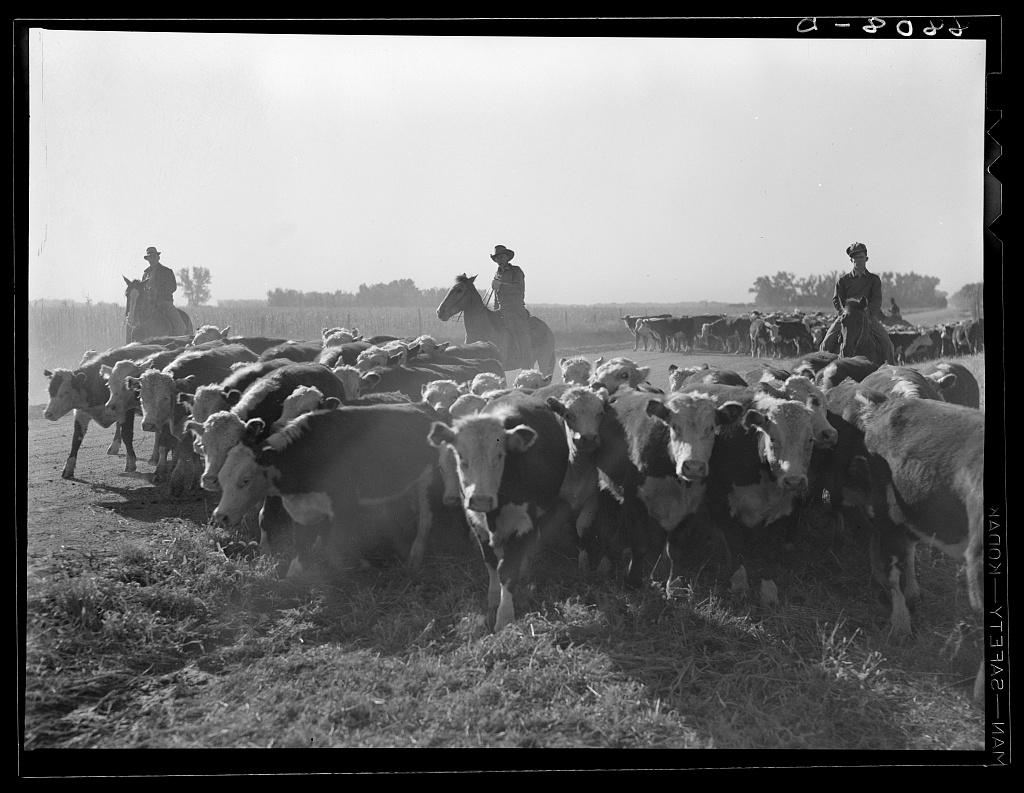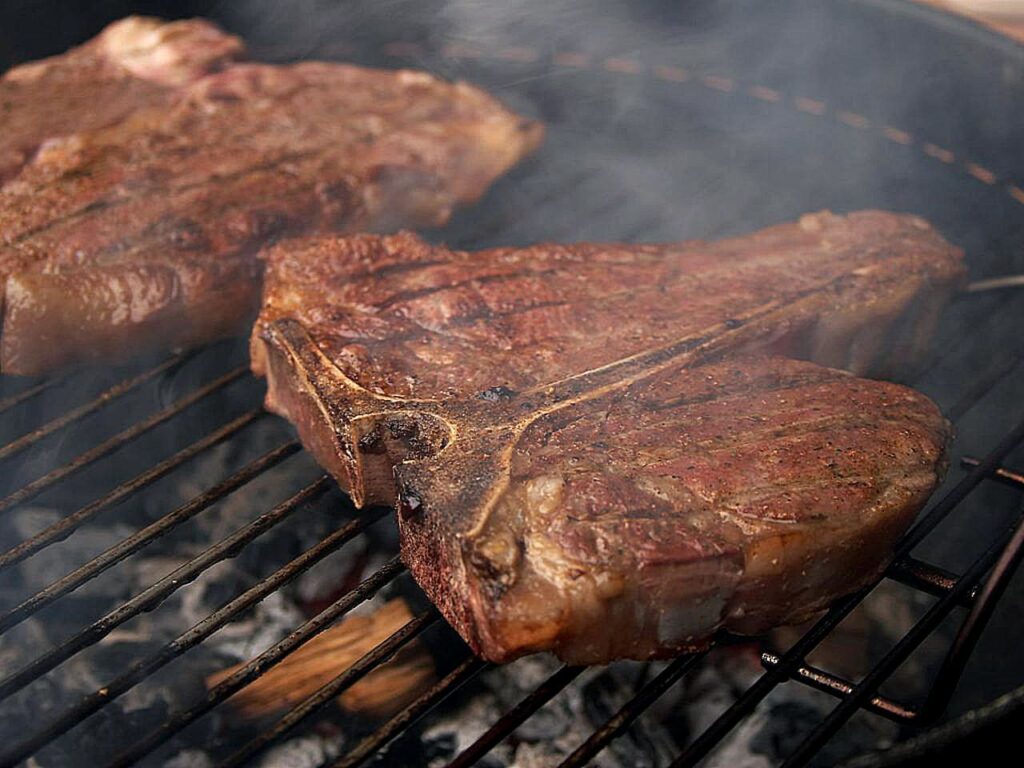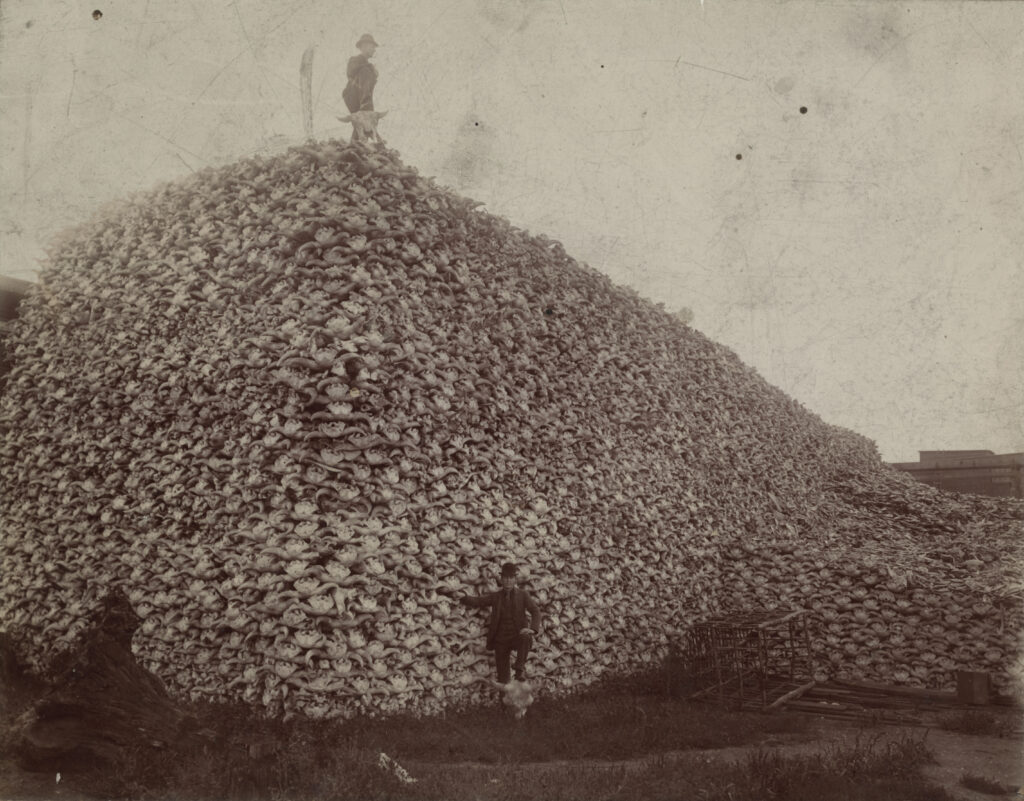Gastropod looks at food through the lens of science and history.
Co-hosts Cynthia Graber and Nicola Twilley serve up a brand new episode every two weeks.
Co-hosts Cynthia Graber and Nicola Twilley serve up a brand new episode every two weeks.

Cowboys and cattle. Dawson County, Nebraska. 1938, courtesy the Library of Congress.
Joshua Specht is an assistant professor of history at the University of Notre Dame, where he studies politics and institutions in 19th century America through the lens of political ecology. Red Meat Republic: A Hoof-to-Table History of How Beef Changed America is his first book.

The porterhouse steak—a giant version of the T-bone steak.

Bison skulls piled up to be turned into glue, fertilizer, or ink at the Michigan Carbon Works near Detroit, in 1892. From the Burton Historical Collection, Detroit Public Library.
Click here for a transcript of the show. Please note that the transcript is provided as a courtesy and may contain errors.